MARKET OVERVIEW
The Global Composite Railing market is the new frontier of modern infrastructure, in which a blending of durability, aesthetics, and efficiency continues to reconfigure what architecture can stand for. Whilst industries worldwide are inclined to materials that assure longevity but demand little maintenance, composite railing is fast emerging as the best option for both residential and commercial and industrial applications. Thus, this space signifies a field of dynamic change in materials engineering, where traditional metal and wooden railings are being stealthily replaced by composite railings that withstand greater endurance against environmental stressors.
The adoption of composite railings has been gaining an uptick in demand, primarily on the part of architectural innovations and the drive towards sustainable construction practices. The possibility of making corrosion-resistant and extreme-weather- and time-wear-resistant railings has opened up with the advanced polymer and reinforced fiber-based production. Unlike conventional materials, these rails feature characteristics that make them rust-, warp-, and pest-free. It is the best choice for the developers and homeowners alike, as their minimal-maintenance and moisture-resistance properties hold out great promise in all the diverse climatic conditions.
Architectural aesthetics play a major role in consumer preferences and professionals in the new global composite railing market. Their design and texture array is meant to satisfy the increasingly flourishing needs of both modern structures and classical ones. Composite railings serve as an interesting option because they replicate the appearance of natural wood or metal finishes but without the negatives. Their structural integrity is not compromised over time, hence reducing the frequency of replacement and expensive refurbishing.
Urbanization and infrastructural advancement can keep hastening the increase of the global composite railing market. With increased urbanization and heightened demands for safety standards in public space, pedestrian bridges, walkways, public parks, and high-rise buildings will see broader scopes of application involving composite railing systems. It is therefore likely that these will be included in public and private projects in order to meet safety standards while realizing long-term cost efficiencies. Future improvements in technology in manufacturing techniques will also sharpen the process of production, both diversifying and making composite railings easier to access.
Global Composite Railing market is estimated to reach $11,853.92 Million by 2032; growing at a CAGR of 12.6% from 2025 to 2032.
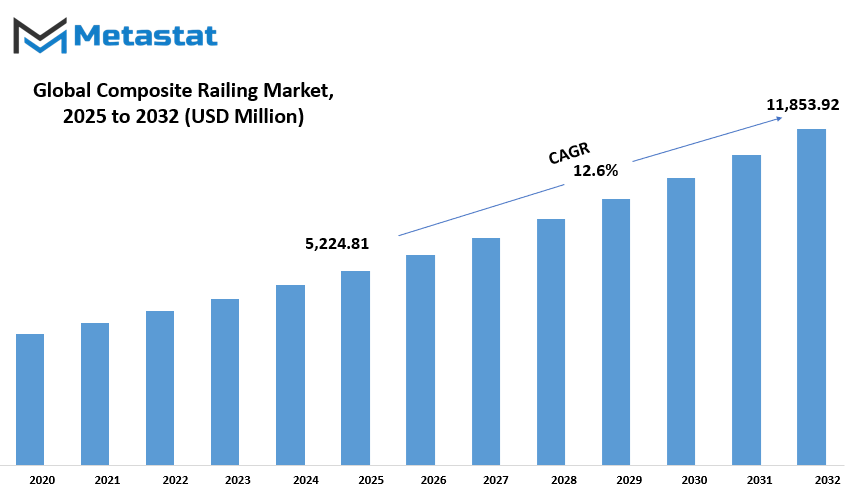
GROWTH FACTORS
The Global Composite Railing market continues to witness slow growth as consumers and businesses turn towards durable and low-maintenance options for their building materials. Composite railings are increasingly the first choice of homeowners and commercial property developers alike, for they balance aesthetics and long-lasting performance. Compare these with wood or metal railings, which can succumb to damaging weather; composite materials require very little in terms of painting and staining and lend themselves to safe construction owing to their toughness. All these advantages make composites good for outdoor spaces, a vast number of which would include balconies, decks, and terraces.
High up in the market drivers is that consumers are gradually being persuaded to choose materials that require very minimal maintenance but tend to retain their structural integrity over time. Many people are turning toward composite railings for they give a streamlined, modern appearance without the common disadvantages of wood, such as rotting and insect damage. What is more, there is also a growing trend of using these materials for commercial and public infrastructure because of their suitability to heavy traffic maintenance and exposure to severe environmental conditions.
Despite the very advantages, composite railings have some drawbacks which may hinder the expansion of this market. One of the most common reasons that consumers refrain from choosing these railings is that they charge high priced compared to the traditional wood or metal alternatives. Additionally, while composite material offers many styles and finishes, it is still limited in terms of color and design in the case of some products, thus making it difficult for the customer to find the best matching option for their architectural ideas.
An important opportunity for the growth of this market would be the increased demand for sustainable building materials. The composite railings came from recycled materials and can be 100% recyclable, so they are a good choice for "green" buildings. With the global emphasis on reducing materials wastage in the construction industry, these materials would likely gain better ground for both home and commercial applications. Builders and developers wanting to adhere to the green standards of building may consider composite railings to fit such considerations as they are expected to be long-lasting and give less harm to the environment.
It is believed that as technology continues to innovate composite railing products, manufacturers are expected to have a much broader palette in terms of colors, styles, and finishes that are able to cater to the diverse needs of consumers. Strength, less maintenance, and environmental value will remain prominent for composite railings, which will further put them in a strong footing against other products, thus making them the top choice for modern construction and renovation projects.
MARKET SEGMENTATION
By Type
Due to the growing demand for durability, low maintenance, and aesthetics, the Global Composite Railing market is about to experience rapid growth. Made with a combination of wood fibers and plastic, composite railings provide excellent protection from moisture, decay, and insect damage, making a more instrumental choice in contrast with traditional materials like wood and metal. The manufacturing technology advances, and with that, composite railing systems are now produced to look like natural wood but much more durability and weather resistant. With growing affluence in their long-term cost-effectiveness and ease of installation, many consumers are leaning towards this type of railing.
The product is segmented into many product types, with each of them having unique features to satisfy different consumer needs. The Composite Railing System represents the largest share of the market, which is approximately around $2,174.31 million. These systems offer a complete solution designed with every component, such as balusters, handrails, and even posts, achieving seamless finish. Capped Composite Railing is gaining acceptance as it has an extra layer providing resistance against fading, stains, and scratches, which leads to a longer life with less maintenance. Meanwhile, Uncapped Composite Railing, which is cheaper, remains a robust competitor because of its strong structure and wide variety of designs available. PVC Composite Railing is another segment which is gaining ground because of its lightweight and higher moisture resistance, proving ideal in coastal areas and high humidity. Hybrid Composite Railing also shares compelling performance in all aspects that focus mainly on the cost, strength, and aesthetics since it uses a combination of different materials.
The rapid growing trend towards sustainability in construction and the adoption of natural materials further fosters the requirement for composite railings. For example, manufacturers now use recycled materials to produce composite railings products, resulting in a reduced impact on the environment but retaining durability in their products. It also refers to the stringent regulations imposed and building codes in favor of fire-resistant structurally sound materials, thereby increasing adoption rates of composite railing systems in residential, commercial, and industrial applications.
Market competition becomes fierce as major players intensify the innovation focus and broaden their marketing product portfolios to offer more consumer-centric solutions. Customization options, improved safety features, and better design flexibility become the critical points of difference to woo buyers. The market, as consumer awareness grows, will be on a steady expansion with manufacturers striving to deliver the product that meets the modern architectural trend as well as sustainability goals.
By Sales Channel
The Global Composite Railing market is becoming an alluring avenue for both industries and consumers in search of long lasting, low maintenance, and aesthetic railing options. With advancements in material technology, composite railings have turned out to be the most preferred choice on account of being weather resistive, long-lasting, and minimal maintenance. Unlike conventional materials such as wood and metals, which could easily rust, rot, or get infested by termites, composite railings offer strength along with visual appeal without much repair or replacement needs. This huge opportunity and demand have thus widened sales channels for getting these products directly to the customers easily.
Different sales strategies are adopted by the manufacturers and suppliers to make their popularity known to diverse consumers. Direct selling day introduces seller and buyer connections between the producers and larger buyers, such as construction firms, contractors, and real estate developers. By virtue of its targeting, tailored orders for large discount benefits are obtainable, leading to the way of negotiations by both parties. Distributors and wholesalers fill the gap between manufacturers and smaller retailers. A continuous supply chain, steadiness of inventory, and logistical support have cemented their relevance to the market. Specialty retail stores have also added to that construction as the sources of sales to customers with expert guidance, product demonstrations, and the overall experience of purchasing with their hands. All these aspects poise themselves to draw homeowners, architects, and small builders who like to see or feel a product before purchase. Today, the rules of the game for purchasing composite railings have changed. Individuals have become quite accustomed to e-commerce websites and the conveniences, prices, and ranges they offer for comparing specifications and customer reviews before ordering.
The truth remains that as urbanization and infrastructure development continue, the demand for high quality long-lasting railings to be placed in these buildings will even be greater in the future. These products assure that self-decorating looks are what the customer is looking for, while even promising safety and reliability. Different sales channels will reach composite railings to different customer segments, including individual homeowners up to the largest construction projects. However, with continuous innovation in composite materials and also improved distribution networks, the market is poised for steady growth through the coming years. Manufacturers and suppliers who align with changing consumer behavior and invest in their sales strategies will survive in this competitive atmosphere.
By Application
There will be a lot of momentum built in the Global Composite Railing market by industries and consumers since both of them would want durable, low-maintenance, and more aesthetically appealing substitutes for their traditional materials. Composite railings, formed by blending wood fibers and plastics, have superior strength, weather resistance, and durability as compared to conventional wooden or metal railings. Thus, such advantages make them the most preferable railing types across applications whether for residential, commercial, industrial, or public infrastructure projects.
Composite railings are extensively applied in the balcony, deck, staircase, and patio area thus preferred by homeowners who would rather not wait and watch what happens to their balconies or decks on rainy, humid, or sunny days since composite railings will never warp, crack, or fade. Care and maintenance are also virtually non-existent due to the absence of staining or painting during these times. Their aesthetic beauty and customizable designs have cemented their place as an attractive addition to both modern and traditional homes.
Composite railings find an extensive application in commercial spaces, like hotels, restaurants, office buildings, and shopping malls. These areas call for composite railings for both aesthetic and functional purposes, and the maintenance cost needs to be kept to a minimum so that it can offer a neat and professional look, mostly preferred by corporations. Hence, they become an excellent choice for non-corrosive materials in structures where heavy durability would be required.
Application of the composite railing also occurs in plants, warehouses, and factories. These environments require sturdy materials that could withstand heavy usage, exposure to chemicals, as well as mechanical stress. Composite railings are strong and corrosion resistant, thus offering an alternative to conventional metal railings which corrode with time. They are also lightweight, which helps in the ease of installation and transport-both added advantages in large industrial dealings.
There is increasing usage of composite railings in bridges, parks, walkways, and terminuses among public infrastructures. This choice is especially due to the durability and long service life of composite materials. Materials causing no environmental harm with slip resistance and safety should be given priority for low maintenance by government authorities and urban planners. Composite railings serve as an excellent highlight to any public space with its slip-resistant surface and structural stability. Thus, the railings have become an integral part of initiating public safety while enhancing aesthetics for pedestrians and commuters.
By End User
With the increasing inclination of users or industries in search of effective substitutes for steel and wood, the global composite railing industry will grow with leaps and bounds. Composite railings provide the best mix of aesthetic and functional attributes, making them an ideal option for all applications. Composite railings have become some of the most popular material-saving and maintenance-free railing systems with the promise of a lifetime of performance because they repel moisture, rot, and insects, thus retaining their value more than most conventional materials which generally require higher maintenance and are more costly over time.
Homeowners are among the major consumers of this market. Many consumers choose to use the materials as home composite railings due to their beauty, safety, and quality of good serviceability against weather conditions. Different styles and colors are available so that the homeowner never has to worry about the exterior maintenance of his property again. Contractors and builders add to the expansion of this market as most of them focus on materials that are easy to install yet durable and appealing to clients. Also, it makes the interior safer in terms of residential and commercial spaces because they do not splinter or warp.
Additionally, architects and designers play a great role in developing market trends when composite railing is used in modern construction projects. This variety of architectural styles means composite railings can serve as an essential material during the developing modern, contemporary, or even traditional types of construction. Offices, shopping centers, and places of hospitality attract most commercial property owners in composite railings. The longs years of life and requirements for custom designs add to the reasons for this material as an attractive investment for companies that intend to maintain a clean, polished appearance.
The other group of end-users in composite railings are governments and municipal authorities. There is a need for construction materials which are applicable in parks, bridges and transport networks. Composite railing fulfils both the requirements and contributes to environmental sustainability, as several of these products are made from recycled material. With public projects becoming increasingly focused on green building, demand for composite railings is on the rise.
|
Forecast Period |
2025-2032 |
|
Market Size in 2025 |
$5,224.81 million |
|
Market Size by 2032 |
$11,853.92 Million |
|
Growth Rate from 2025 to 2032 |
12.6% |
|
Base Year |
2025 |
|
Regions Covered |
North America, Europe, Asia-Pacific, South America, Middle East & Africa |
REGIONAL ANALYSIS
While the Middle East and the rest of Africa are two regions, the remaining division of the worldwide composite railing market into seven regions according to geographical criteria covers North America, Europe, Asia Pacific, and South America. For instance, in North America, it includes the USA, Canada, and Mexico; whereas in Europe, it covers essentially principal countries such as the UK, Germany, France, etc. along with some other countries categorized as "Rest of Europe." Asia-Pacific comprises countries like India, China, Japan, South Korea, and the rest denoted as "Rest of Asia-Pacific." Similarly, South America covers Brazil, Argentina, and other countries in South America - branded "Rest of South America." Finally, the Middle East & Africa is categorized into GCC countries, Egypt, and South Africa, plus other countries in the region classified as "Rest of Middle East & Africa".
Each of these regions is crucial to the development and growth of the global composite railing market. North America has high demand for composite railing products, particularly in residential and commercial construction, where hard-wearing characteristics and aesthetics are of prime importance. The European market follows closely behind, with huge construction industries in countries such as Germany and the UK driving the demands for composite material. The different climates found in Europe, allowing for tapping composite railings, further promote wear and tear on the environment.
In Asia-Pacific, growing urbanization entices big-time adoption of composite railing solutions in China and India. This demand is growing along with the construction and real estate sectors in these countries. Demand for these materials also remains steady in South Korea, whose infrastructure is among the most developed in the world. Brazil and Argentina in South America are noteworthy for their growing interests in residential and commercial developments, which places great demand for composite railings.
Demand is gradually rising in the Middle East and Africa. Countries in the GCC and Egypt, along with construction and infrastructure in South Africa, are targeting large-scale infrastructure and construction works. The trend will, therefore, continue with the further urbanization of this area, thus creating an ever-stronger market for composite railing solutions.
In simple words, global composite railing markets are turning growth live and die hard in every part of the world due to construction activity and urbanization besides a growing demand for materials that are durable and require low maintenance. Nevertheless, the different markets in regions have already made sure of a very dynamic future having different challenges and opportunities for every geographic segment.
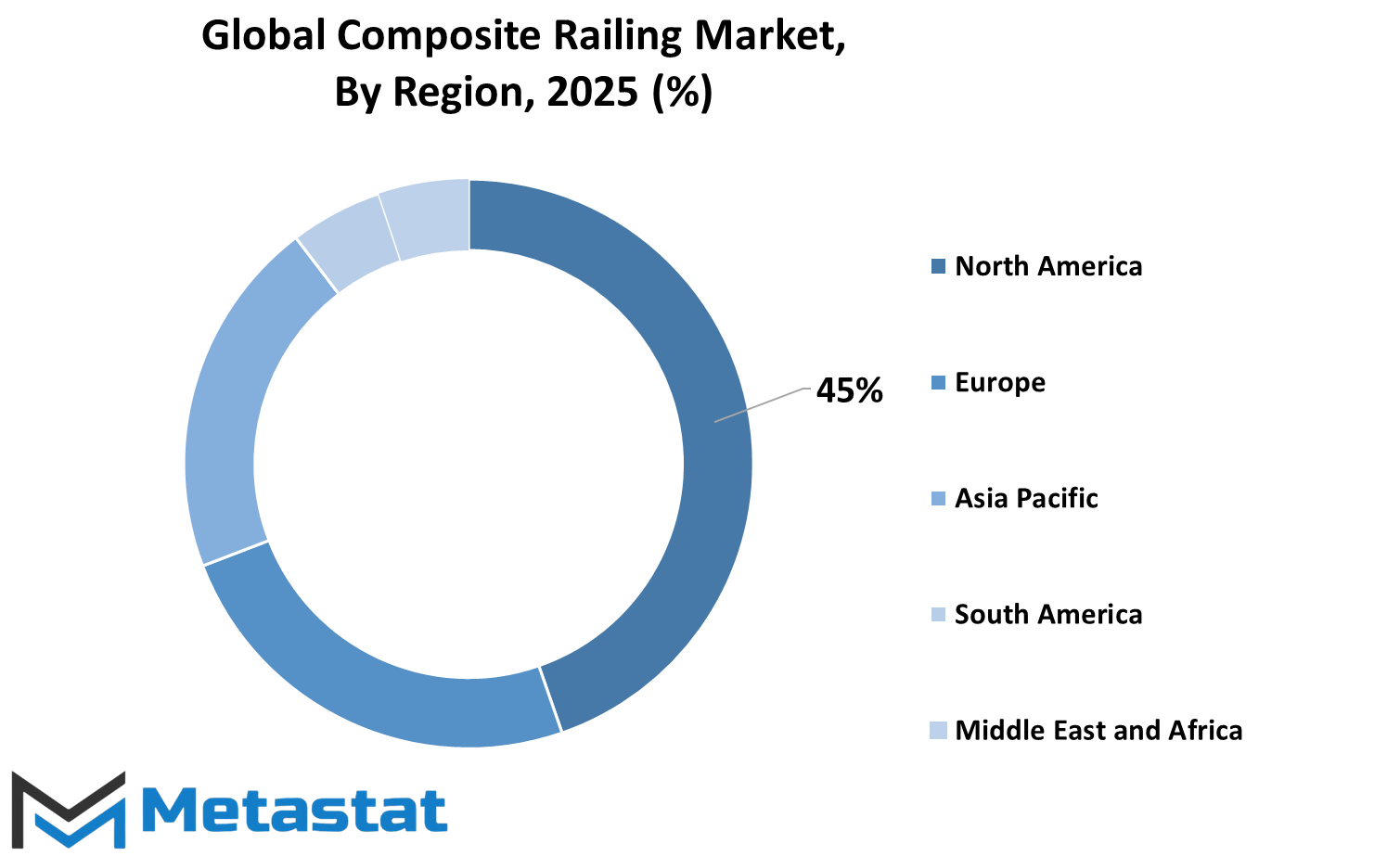
COMPETITIVE PLAYERS
Leading players in the Global Composite Railing market have been facilitators of certain growth and innovations. Companies such as Trex Co., Inc.; Fiberon (Fortune Brands); TimberTech (AZEK); and Fortress Building Products have emerged as major players in the composite railing market. These manufacturers have been engaged in the design and development of railing solutions offering durability and aesthetics with minimal maintenance. Due to the changing preferences of cheaper-to-maintain materials, composite railings have become popular in both residential and commercial segments as they withstand harsh weather without wearing out or needing frequent repairs.
Composite railing systems are still in huge demand as homeowners and businesses seek truly durable and visually appealing outdoor structures. Composite railings are fast becoming a preferred solution versus traditional wood railings that require constant upkeep through staining and painting. The industry has been revolutionized with innovations in composition, with manufacturers introducing recycled materials and optimizing resistant coatings that extend life. RDI by Barrette Outdoor Living, MoistureShield, and CertainTeed (Saint-Gobain) are some of the companies that have been fiercely advocating sustainable practices, causing the environment to remain part of its products while the others chase performance.
The industry's safety and building code requirements are key market drivers. Composite railings represent an enhancement in strength over some traditional materials and are therefore preferred for decks, balconies, and staircases. Moisture, termites, and UV rays do little to harm them, allowing these materials to be employed in a variety of climate conditions. DuraLife Decking & Railing, Fairway Architectural Railing Solutions, and Intex Millwork Solutions have been working on developing and refining their range of products to satisfy those requirements as closely as possible while addressing the ever-changing client preferences.
Design innovation has indeed contributed mainly to the growth of composite railings. Custom style, color, and finish have become the mainstay in railing design that is uniquely modern in restorative architectural aesthetics. To this end, companies such as DekPro Aluminum Railing and Green Bay Decking are still creating products that blend form and performance, making it possible for property owners to achieve refinement while not sacrificing durability.
The competitive environment for composite rails remains dynamic, as manufacturers explore new technologies and materials toward achieving performance and sustainability. The combination of rising consumer awareness and increasing desire for quality yet low-maintenance solutions will lead to steady growth for the industry. We expect that the industry's leaders will continue to invest R&D efforts to ensure composite railings remain a viable choice against the more traditional materials while meeting modern construction needs.
Composite Railing Market Key Segments:
By Type
- Composite Railing Systems
- Capped Composite Railing
- Uncapped Composite Railing
- PVC Composite Railing
- Hybrid Composite Railing
By Sales Channel
- Direct Sales
- Distributors & Wholesalers
- Specialty Retail Stores
- Online Platforms
By Application
- Residential
- Commercial
- Industrial
- Public Infrastructure
By End User
- Homeowners
- Contractors & Builders
- Architects & Designers
- Commercial Property Owners
- Government & Municipalities
Key Global Composite Railing Industry Players
- Trex Company, Inc.
- Fiberon (Fortune Brands)
- TimberTech (AZEK)
- Fortress Building Products
- RDI by Barrette Outdoor Living
- MoistureShield
- CertainTeed (Saint-Gobain)
- DuraLife Decking & Railing
- Fairway Architectural Railing Solutions
- Intex Millwork Solutions
- DekPro Aluminum Railing
- Green Bay Decking
WHAT REPORT PROVIDES
- Full in-depth analysis of the parent Industry
- Important changes in market and its dynamics
- Segmentation details of the market
- Former, on-going, and projected market analysis in terms of volume and value
- Assessment of niche industry developments
- Market share analysis
- Key strategies of major players
- Emerging segments and regional growth potential



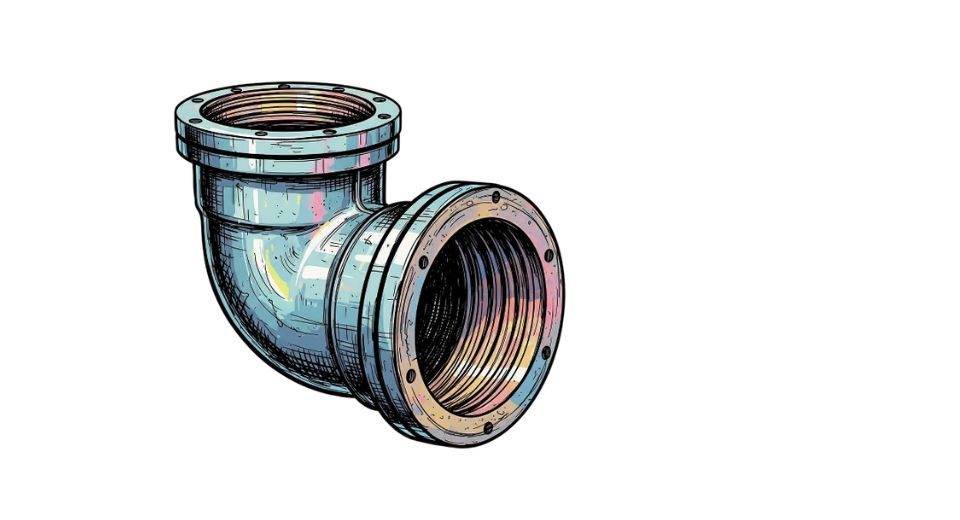
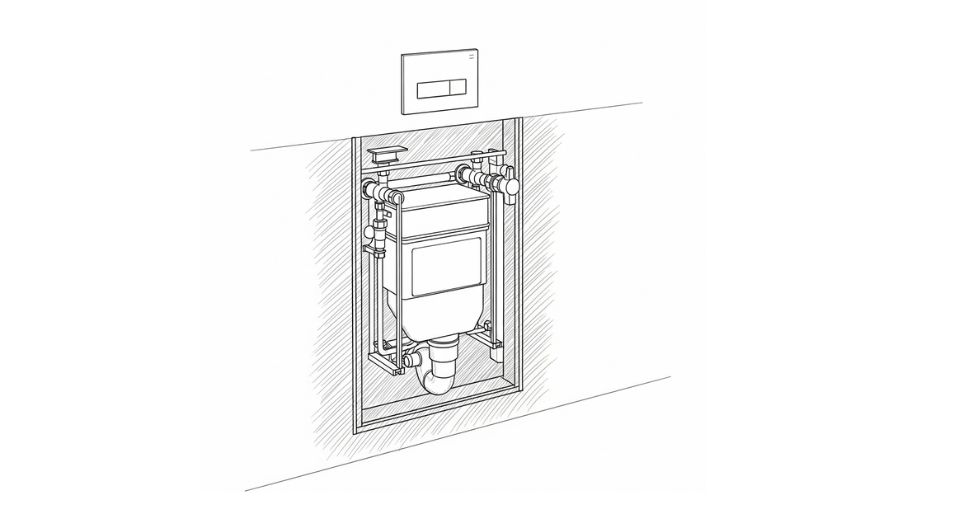

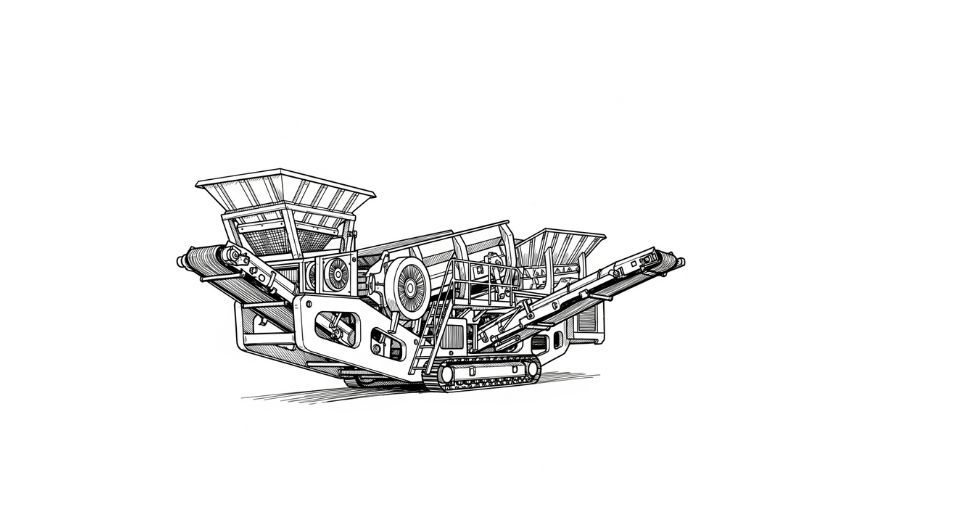

 US: +1 3023308252
US: +1 3023308252






